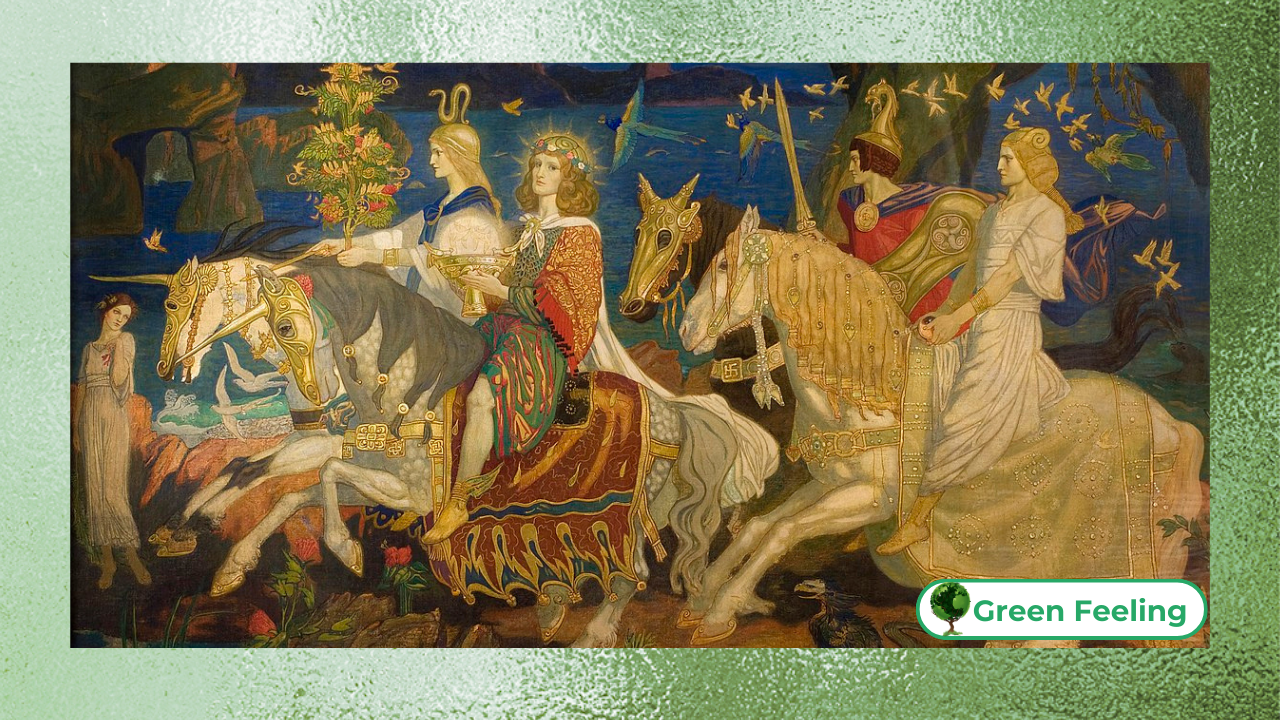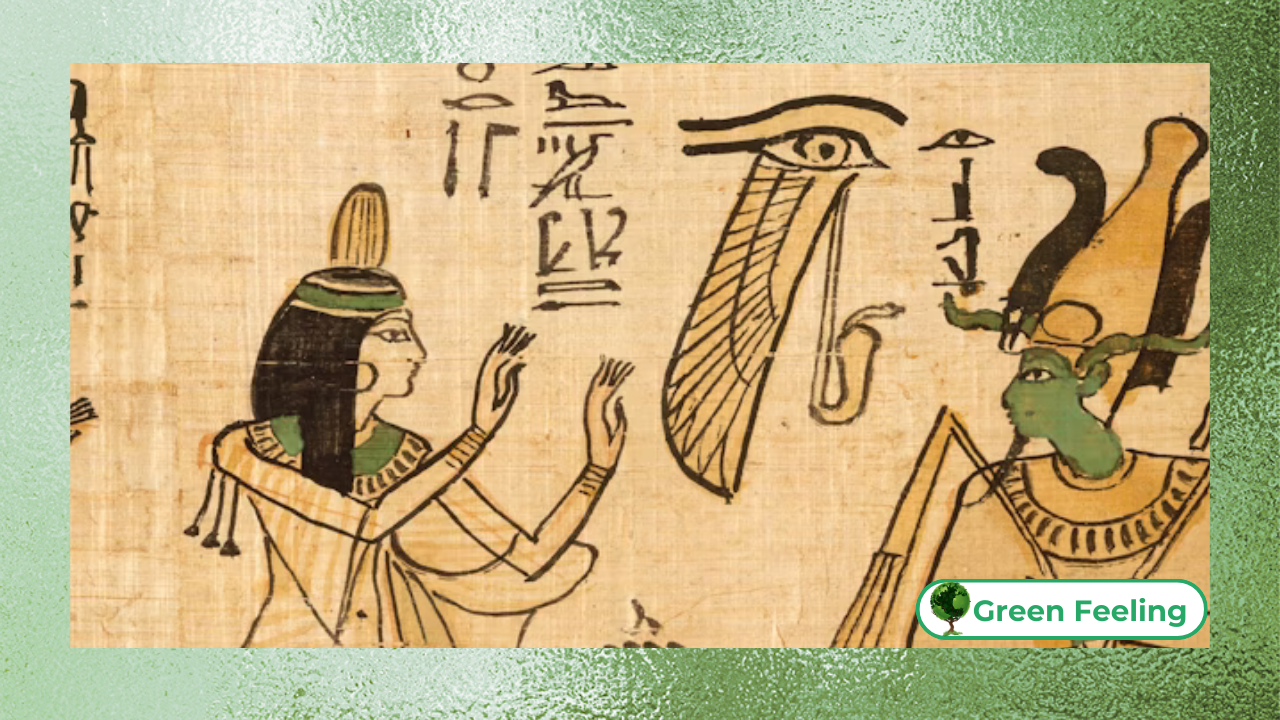The Four Elements and Sustainability: Mythology and Natural Balance
Since ancient times, the four fundamental elements — Earth, Water, Air, and Fire — have been used to explain the structure of the world.

Present in various mythologies and philosophies, these elements represent balance and harmony, essential concepts for modern sustainability.
By interconnecting mythology and environmental science, we can understand how nature regulates itself and how we can preserve this balance.
These elements not only form the basis of nature but also provide essential resources for human survival.
Understanding their symbolic and practical roles allows us to implement sustainable policies that align with the natural world’s cycles.
The lessons from ancient wisdom can serve as guiding principles for ecological conservation and climate change mitigation.
The Four Elements in Mythology and Philosophy
The four elements appear in various cultural traditions.
In Greek philosophy, Empedocles (c. 490-430 BCE) proposed that these elements formed all existing matter.
In Hinduism, the elements appear as the “Pancha Mahabhutas” (earth, water, fire, air, and ether). In medieval alchemy, the elements were associated with the transformation of matter and spirit.
+ The Natural Gods of Egypt: Mythology and Its Elements
Table 1 – The Four Elements in Different Cultures
| Culture | Fundamental Elements | Meaning |
| Greek | Earth, Water, Air, Fire | Basis of matter |
| Hinduism | Prithvi (Earth), Apas (Water), Tejas (Fire), Vayu (Air), Akasha (Ether) | Cosmic balance |
| Chinese | Wood, Fire, Earth, Metal, Water |
Dynamic interactions
|
| Alchemy | Earth, Water, Air, Fire |
Spiritual and material transmutation
|
The presence of these elements in different cultural traditions shows their universal importance in shaping both physical and metaphysical understandings of the world.
While scientific advancements have provided deeper insights into nature, these classical elements continue to influence ecological awareness.
The four elements have also played a role in shaping ancient medicine.
In Greek medicine, Hippocrates related the elements to the four bodily humors: blood (air), yellow bile (fire), black bile (earth), and phlegm (water).
This system influenced medical practices for centuries, emphasizing the need for balance in health, much like in nature.
+ Norse Mythology: The Gods and Their Worlds
Relationship Between the Elements and Sustainability

Mythology provides a symbolic view of how nature operates. In the environmental context, we can understand that an imbalance in any of these elements directly impacts the planet.
Sustainability efforts must address each element holistically to maintain ecological harmony.
Earth: Soil and Agricultural Sustainability
Earth represents stability and nourishment. In sustainability, it relates to fertile soil, essential for agriculture and biodiversity.
Challenges:
- Soil degradation due to deforestation and monocultures
- Excessive use of chemical fertilizers
- Desertification caused by climate change
- Loss of biodiversity due to habitat destruction
Sustainable Solutions:
- Crop rotation practices
- Agroforestry and permaculture
- Regenerative agriculture
- Soil conservation techniques such as terracing and cover cropping
Healthy soil is the foundation of food security. Without it, entire ecosystems collapse, impacting not just agriculture but also water cycles and carbon sequestration.
Policies that encourage sustainable land use are critical for maintaining ecological balance.
Water: The Vital Resource and the Water Crisis
Water symbolizes purification and flow. Without this element, life would not be possible.
Current Problems:
- Pollution of rivers and oceans
- Shortage of drinking water
- Irrational use in industry and agriculture
- Melting glaciers and rising sea levels due to global warming
Sustainable Practices:
- Water reuse
- Rainwater harvesting
- Reduction of disposable plastics
- Implementation of efficient irrigation systems
Water is also crucial for energy production. Hydroelectric power depends on water cycles, and desalination plants are becoming more important in arid regions.
Integrating water management into sustainability strategies ensures long-term resource availability.
+ Water treatment Plants: Processes and Solutions
Air: Atmospheric Quality and Climate Change
Air represents mobility and interconnection. Air pollution affects global health.
Main Impacts:
- Emission of greenhouse gases
- Burning of fossil fuels
- Deforestation reducing CO2 capture
- Increase in respiratory diseases due to air pollution
Sustainability Measures:
- Use of renewable energy
- Reduction of combustion vehicles
- Tree planting and reforestation
- Stricter air quality regulations and monitoring
The atmosphere is vital for regulating temperature and protecting against harmful solar radiation.
Airborne pollutants not only harm human health but also disrupt weather patterns, leading to extreme climate events.
Fire: Energy and the Role of Renewable Sources
Fire symbolizes transformation and energy. The global energy matrix depends on this element.
Related Problems:
- Dependence on fossil fuels
- Wildfires exacerbated by global warming
- Irresponsible exploitation of energy resources
- High levels of carbon emissions from traditional power generation
Sustainable Alternatives:
- Solar, wind, and geothermal energy
- Energy efficiency and consumption reduction
- Sustainable biofuels
- Advancements in nuclear fusion as a potential clean energy source
Fire has also been historically linked to human progress, from metallurgy to industrialization. Shifting energy sources away from fossil fuels to renewables will determine the success of sustainability efforts.
+ Mother Earth in the Andean Cosmovision: Sustainability and Respect for the Environment
The Balance of Elements as a Sustainable Model

Mythology suggests that the harmony of the four elements is essential for the continuity of life. This concept can be applied to sustainability, ensuring a balanced development model.
An imbalance in one element affects the others. For example, excessive deforestation (Earth) leads to reduced CO2 absorption, which increases greenhouse gases (Air), leading to climate change and extreme weather patterns (Water and Fire).
Sustainable models must incorporate all four elements to create resilient ecosystems.
Table 2 – Elements and Their Sustainable Solutions
| Element | Problem |
Sustainable Solution
|
| Earth | Soil depletion |
Agroecology, reforestation, biodiversity conservation
|
| Water | Pollution and scarcity |
Rainwater harvesting, desalination, wastewater treatment
|
| Air | Atmospheric pollution |
Reduction of carbon emissions, stricter regulations
|
| Fire | Use of fossil fuels |
Renewable energies, energy-efficient technologies
|
Technological and Policy Approaches to Sustainability
Addressing environmental issues requires scientific advancements and strong policies. Sustainable solutions include:
- Green Technologies: Innovations such as carbon capture, electric vehicles, and biodegradable materials reduce environmental impact.
- Government Regulations: Policies enforcing environmental protection laws ensure that industries comply with sustainability standards.
- Education and Awareness: Promoting eco-conscious behavior among individuals and corporations fosters a collective approach to sustainability.
Scientific studies, such as those conducted by Lovelock (2006), suggest that Earth functions as a self-regulating organism, reinforcing the idea that balance between natural elements is crucial.
+ The Role of Animals in Mythology: Guardians of Nature
Conclusion
Ancient wisdom about the four elements teaches us that sustainability depends on the balance of natural resources.
The interconnection of Earth, Water, Air, and Fire emphasizes that any environmental solution must consider multiple factors.
By adopting sustainable practices inspired by this harmony, we can ensure a healthier future for the planet and future generations.
The growing climate crisis demands urgent action. Governments, industries, and individuals must work together to protect the natural balance that sustains life.
By applying both traditional wisdom and modern science, we can move towards a sustainable future that honors the legacy of ancient knowledge while meeting contemporary ecological challenges.
References
- CAPRA, Fritjof. O Ponto de Mutação. São Paulo: Cultrix, 1982.
- LOVELOCK, James. Gaia: Um Novo Olhar sobre a Vida na Terra. Rio de Janeiro: Intrínseca, 2006.
- SHIVA, Vandana. Earth Democracy. Cambridge: South End Press, 2005.
- INTERGOVERNMENTAL PANEL ON CLIMATE CHANGE (IPCC). Climate Change 2021: The Physical Science Basis. Cambridge University Press, 2021.






